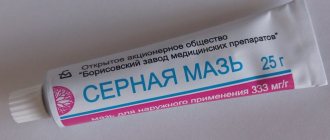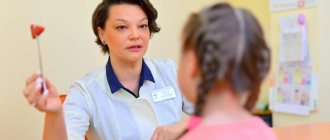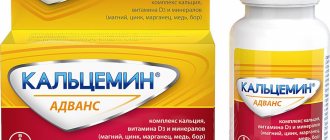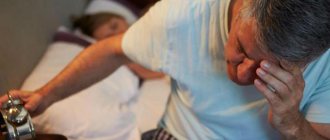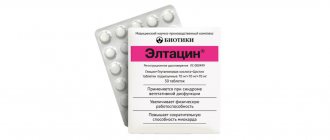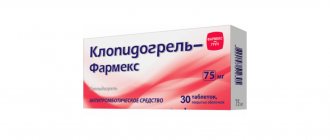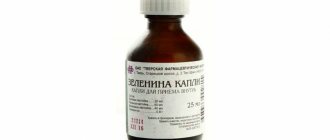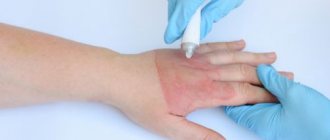Among the preparations for external use there are ointments with a wide spectrum of action. An example of such a medicine is Eplan. It is used for wounds, abrasions, bedsores, burns, herpes and many other skin diseases. It has a bactericidal, anti-inflammatory and analgesic effect. You can buy the ointment at an affordable price in almost any pharmacy.
Eplan ointment: description, composition
"Eplan" is a drug characterized by analgesic, bactericidal, and wound-healing effects. Also promotes tissue restoration after damage. Available in the form of cream and solution. The composition includes the active substance (glycolan) and auxiliary components (water, glycerin, polyethylene glycol and others).
Belongs to the class of dermatotropic drugs, used only externally. Antiseptic, inhibits the activity of pathogenic bacteria, and also counteracts inflammatory processes. In addition, the glycerin contained in the ointment softens the tissues and stimulates their healing.
The drug affects all tissues of the skin, eliminates itching and pain. At the same time, healing occurs at a faster rate, tissues do not die, which allows the skin to remain attractive.
Indications, contraindications and side effects
The use of Eplan ointment is indicated in the following cases:
- burns of any nature, including solar and chemical;
- bedsores;
- herpes;
- papillomas;
- warts;
- frostbite of various types;
- ulcers of a trophic nature;
- otitis;
- sycosis;
- pyoderma of bacterial origin;
- psoriasis;
- itching, swelling due to bites of various insects;
- acne vulgaris;
- microbial eczema;
- radiation injuries;
- otomycosis;
- dyshidrosis;
- prophylaxis to protect the skin when working in harmful conditions, for example, in an aggressive acidic environment, with reagents, fertilizers, etc.
As an antiseptic with an anti-inflammatory effect, the ointment is used not only in medicine, but also in veterinary medicine (for the treatment of similar pathologies in domestic animals).
"Eplan" has a safe composition, therefore it is indicated for use in almost all cases, with the exception of individual intolerance. The ointment does not have side effects, but if an allergic reaction occurs, treatment should be stopped and consult a doctor for a possible replacement of the drug.
INSTRUCTIONS: Antiseptic wipes, sterile “Eplan from 100 wounds”, RU MZ and SR No. ФСR2009/05127
Purpose
Antiseptic napkins, sterile “Eplan from 100 wounds” - a medical product for external use /hereinafter napkins (bandages) “Eplan from 100 wounds”.
The medical product is a two-layer medical gauze napkin measuring 16x14 cm, impregnated with a solution of the Eplan drug in individual sealed packaging. The product is sterile.
Providing first aid, treatment and treatment of wounds, burns of I, II, III degrees, abrasions, bruises, other traumatic injuries to the skin, purulent-inflammatory diseases of the skin and subcutaneous tissue of various locations and etiologies in all phases of the wound process. Effective prevention of secondary infection.
Providing medical care for combined injuries of a mechanical, thermal, chemical, radiation nature, microbial contamination. “Eplan from 100 wounds” dressings simultaneously have a pronounced antimicrobial (bactericidal, bacteriostatic), wound healing, regenerating, local anesthetic and protective effect.
Evidence base
Approbation is confirmed by approved documents - reports on randomized controlled trials conducted on the basis of: Federal State Institution Institute of Surgery named after A.V. Vishnevsky (Moscow, 2005, 19 p.), Research Institute of Emergency Medicine named after N.V. Sklifosovsky (Moscow , 2005, 15 p.); GOUVPO "Russian State Medical University" (Moscow, 2005, 17 p.); GVKG named after N.N. Burdenko of the Ministry of Defense of the Russian Federation (Moscow, 2005, 7 p.).
The given results are confirmed by medical practice of using the drug, a set of tests carried out on the basis of: GOUVPO VMA named after S.M. Kirov, (St. Petersburg); Federal State Institution “All-Russian Center for Disaster Medicine “Zashchita” (Moscow); State Central Airmobile Rescue Squad of the Ministry of Emergency Situations of Russia (Zhukovsky); /Special unit of the Ministry of Internal Affairs of Russia; Polyclinic No. 5 of the Federal Security Service of the Russian Federation; State Military Clinical Hospital named after N.N. Burdenko of the Ministry of Defense of the Russian Federation (radiological center); City Clinical Hospital No. 15; City Clinical Hospital No. 29; MONIKI; KVD No. 8; KVD No. 19/ (Moscow); Medical Radiological Research Center of the Russian Academy of Medical Sciences (Obninsk); Moscow Regional Oncology Dispensary (Balashikha); GOUVPO Moscow State Medical and Dental University; OJSC NPK Uralvagonzavod (Nizhny Tagil); enterprises: EvrazHolding LLC, Rosatom State Corporation, MOESK, etc.
Indications for use
-Providing first aid and treatment of superficial solar, thermal, chemical burns and frostbite; light, superficial bruises, wounds, cuts, abrasions, abrasions, cracks and injuries to the feet. -Treatment of wounds of various locations and etiologies in all phases of healing. -Treatment of purulent-necrotic wounds of soft tissues, incl. post-traumatic, post-operative. -Treatment of trophic ulcers, bedsores and flaccid granulating wounds.
In addition, the drug is indicated
- when providing medical care at extreme temperatures (use temperature from -40C to +50C); -in cases of intolerance to drugs (levomekol, levosin, etc.); -to relieve pain and swelling from injuries (bruises, sprains, etc.); - to relieve itching from insect bites; for skin diseases: dermatitis of various etiologies, acne vulgaris, microbial eczema, viral infections (herpes, warts, condylomas); -for aseptic treatment of skin, destruction of vegetative microorganisms, including fungi; - to protect the skin from unfavorable climatic conditions (low temperatures, wind, humidity) in order to prevent frostbite, chapping and roughening of the skin; - to protect the skin from aggressive chemical and toxic substances (acids, alkalis, fuels and lubricants, rocket fuel, etc.) and to treat skin damage resulting from contact with these substances.
Efficiency
-Reducing the time of outpatient and hospital treatment. The length of hospital stay is reduced: for purulent-necrotic wounds by an average of 5-7 days; for superficial burns of II, III degrees on average for 5-6 days compared to the use of standard traditional medications. -Reducing the time of outpatient and inpatient treatment compared to modern anti-burn drugs by 3-4 days. -Reducing the time required for recovery and return to work (to work) of victims after injuries and wounds, reducing treatment costs (see healing time above). -Reducing the time to provide assistance to victims, saving dressing material due to the compactness, simplicity and ease of use of the dressing, its good fixation on the wound surface of any configuration. - Absence of allergic reactions, side effects and complications, non-traumatic, pain and swelling relief from injuries.
Procedure for working with the product
Preparing for work
-Open the package (package) along the notch and take out a napkin; -If necessary, unfold the napkin.
Instructions for use
Externally.
-I and II degree burns, small wounds, minor wounds, superficial bruises, cuts, abrasions, abrasions, cracks and damage to the feet and other skin lesions: lubricate the affected area, and repeat the treatment periodically until complete healing.
In case of significant damage.
-Burns with an area of up to 10% at all phases of the wound process: after opening the burn blisters, removing exfoliated necrotic epidermis and treating the wounds with antiseptics (Eplan from 100 wounds napkin), an “Eplan from 100 wounds” napkin is applied to the damaged surface, and a sterile napkin is placed on top and fixed with a gauze bandage (standard dressing). -During the first days of treatment, the dressings are changed daily. In subsequent periods, depending on the condition of the wound, the dressings are changed daily or every 1 day. - Purulent-necrotic wounds, bedsores, etc. at all phases of the wound process: after treating the wound with antiseptic solutions (Eplan from 100 wounds napkin), an Eplan from 100 wounds napkin is applied to the damaged surface and fixed with a light bandage (gauze bandage, IPP1, etc.). Treatment is carried out daily or every other day, depending on the condition of the wound.
Note:
1) In the absence of antiseptics, the wound is treated with an “Eplan from 100 wounds” napkin.
2) If necessary, use (apply to the wound) several “Eplan from 100 wounds” napkins.
3) “Eplan from 100 wounds” dressings are atraumatic and do not stick to wounds when changing dressings.
-In case of chemical burns: in case of contact with vapors, aerosols, solid and liquid chemical ecotoxicants (for example, in field conditions: the poisonous hogweed plant). -If possible, wash off the toxic substance with water and blot the wound with a gauze napkin (bandage or other available material), treat the affected area with an “Eplan from 100 wounds” napkin. An “Eplan from 100 wounds” napkin is applied to the damaged surface and secured with a light bandage. Treatment is carried out daily or every other day, depending on the condition of the wound. -Protection of the skin from adverse climatic conditions; for chemical and sunburn: apply a thin layer of the “Eplan from 100 wounds” napkin to exposed skin (face, hands). - Removing swelling and itching of the skin from insect bites (mosquitoes, wasps, bees): with an “Eplan from 100 wounds” napkin, lubricate (dab) the bite site. -Sprains and inflammation of ligaments: apply an “Eplan from 100 wounds” napkin to the damaged surface and secure it with a light bandage. Change dressings daily or every other day depending on the condition of the wound. -Pustular diseases, acne vulgaris, etc.: treat the damaged surface with an “Eplan from 100 wounds” napkin. Repeat the treatment periodically until complete healing. If necessary, cut the napkin into pieces and sequentially (daily or every other day) apply them to the wound and secure with adhesive tape.
Contraindications for use
Individual intolerance to the components of the drug.
Storage conditions
Do not require special storage conditions. Shelf life: 5 years.
, JSC "OBERON", 111024, Russia, Moscow, Entuziastov highway, no. 56.
Eplan ointment: instructions for use
The ointment can only be used externally. The affected area is washed, wiped and a small amount of the composition is applied, evenly distributing and rubbing over the surface. The protective effect lasts for 8 hours, after which the procedure can be repeated - i.e. only 2 times a day.
If the skin is significantly damaged by burns, ulcers, purulent wounds, but ointment is applied to the surface. You can also use a sterile bandage soaked in Eplana solution. These steps must be repeated daily until complete recovery.
To prevent skin lesions when working with hazardous chemicals and fertilizers, the cream should be applied evenly over the skin of the hands, using 0.2 g per 1 dm2. To achieve the effect, repeat the procedure 2 times - before starting work and at the end of the working day.
The product in liquid form is easier to apply pointwise to a limited area. You can take it on the go and use it regularly. To prevent the appearance of acne, the solution is diluted with water and wiped over the face, as well as problem areas of the skin.
No cases of overdose have been reported to date. The drug is safe if the described rules are followed. Ingestion is not allowed.
The ointment is used until complete recovery. Multiple doses over several weeks are not excluded. The product is quite effective and does not cause side effects.
INSTRUCTIONS: EPLAN 25% UREA, GOST 31679-2012
A combined preparation for daily preventive care for dry, rough, cracked skin of the hands and feet. An effective remedy for removing corns, softening dry calluses, hard and difficult to remove cuticles.
Returns skin softness, elasticity, prevents the development of cracks. Reliably protects the skin from damaging factors.
The introduction of one of the strongest keratolytics and moisturizers - urea - into Eplan allows you to fully restore the elasticity of the skin, normalize its moisture and maintain the integrity of the skin. The drug is an effective means of preventing cracks and correcting their manifestations. Suitable for use in hardware pedicure and non-hardware professional foot care programs.
Compound
Triethylene glycol, urea, ethoxydiglycol, glycolan, glycerin, lactic acid, panthenol, perfume.
Recommendations for use
Distribute a small amount of product evenly over cleansed skin.
Contraindications
Hypersensitivity to individual components of the drug.
Storage conditions
Does not require special storage conditions. Keep out of the reach of children.
Best before date
5 years from the date of manufacture.
, Russia, 111123, Moscow, Entuziastov highway, 56.
special instructions
"Epalan" can be used at any stage of pregnancy, as well as during breastfeeding. It is non-toxic and does not pose a health threat, so it can be used without first consulting a doctor. The only exception is the possible manifestation of allergic reactions due to individual intolerance.
The ointment does not leave greasy marks on clothes, so it can be used to treat different areas. Moreover, due to the presence of glycerin, hands may be “greasy” after treatment. Therefore, it is better to do the procedure at home, before starting work.

